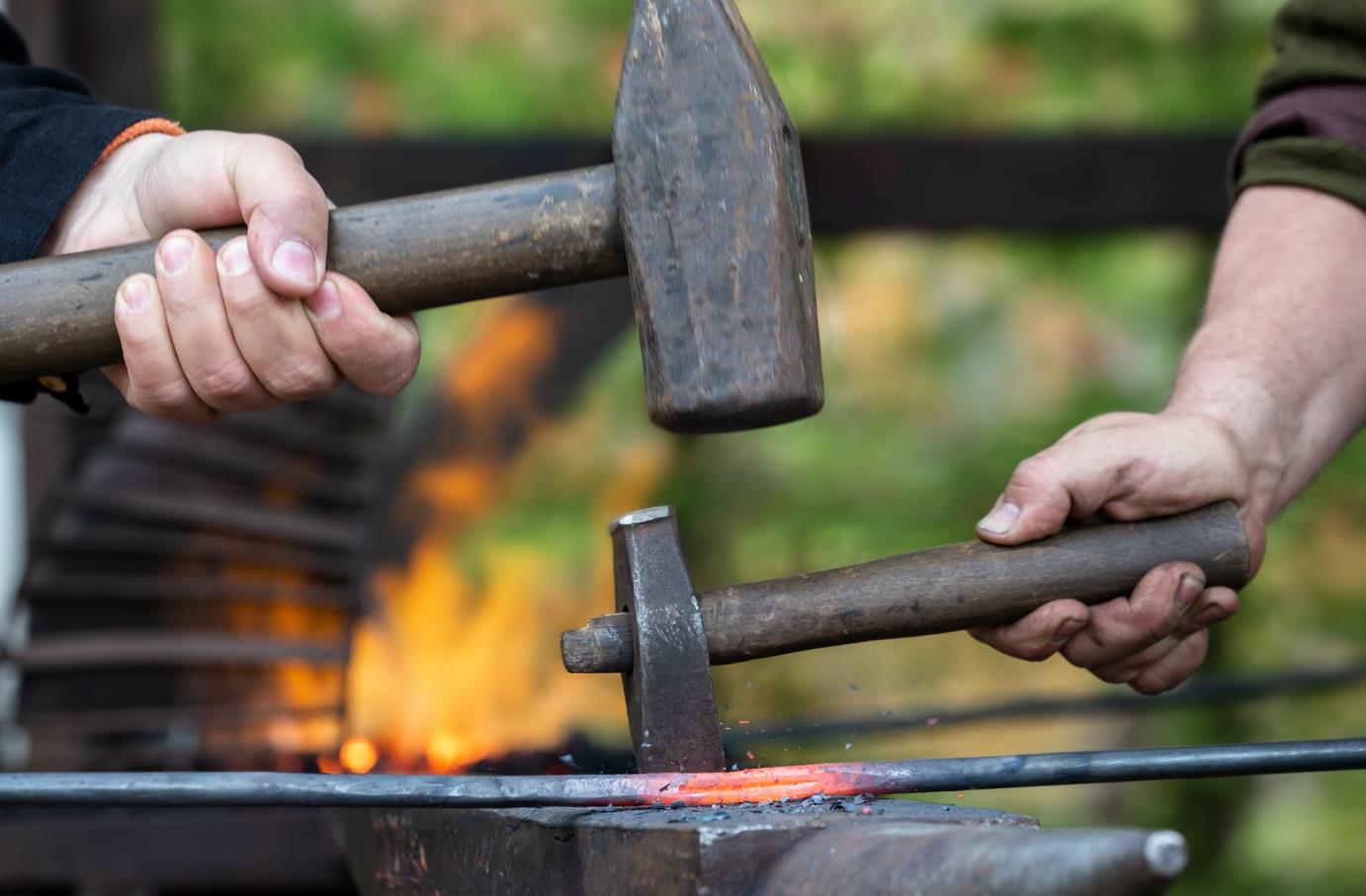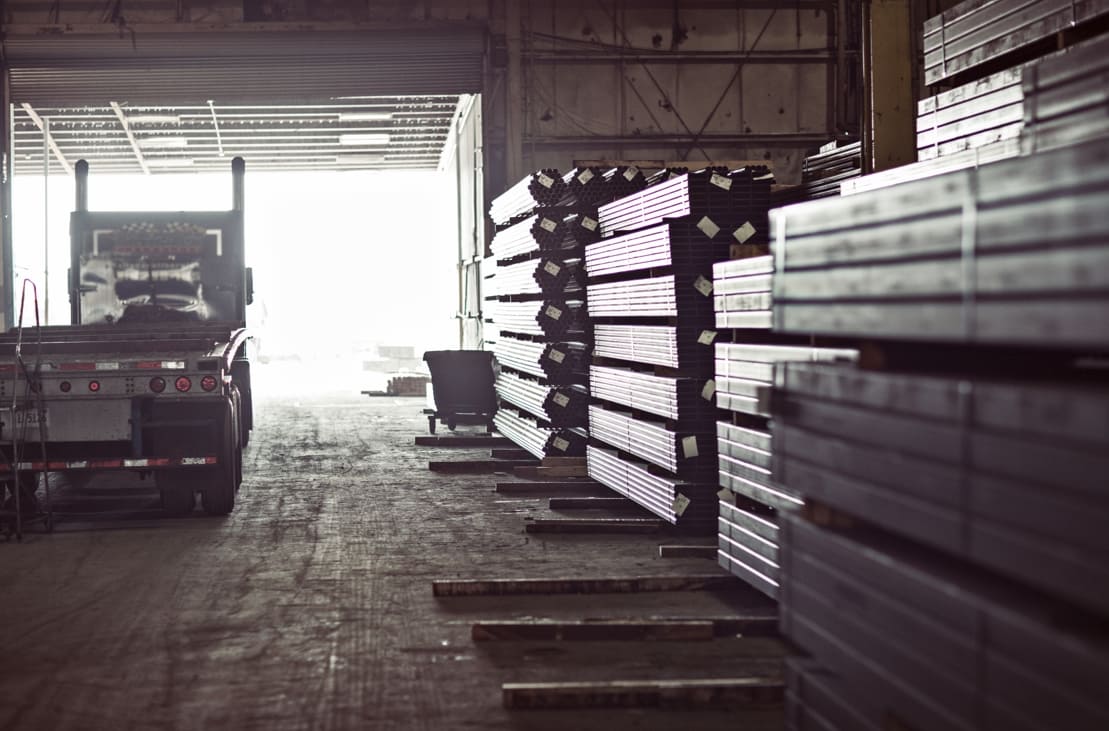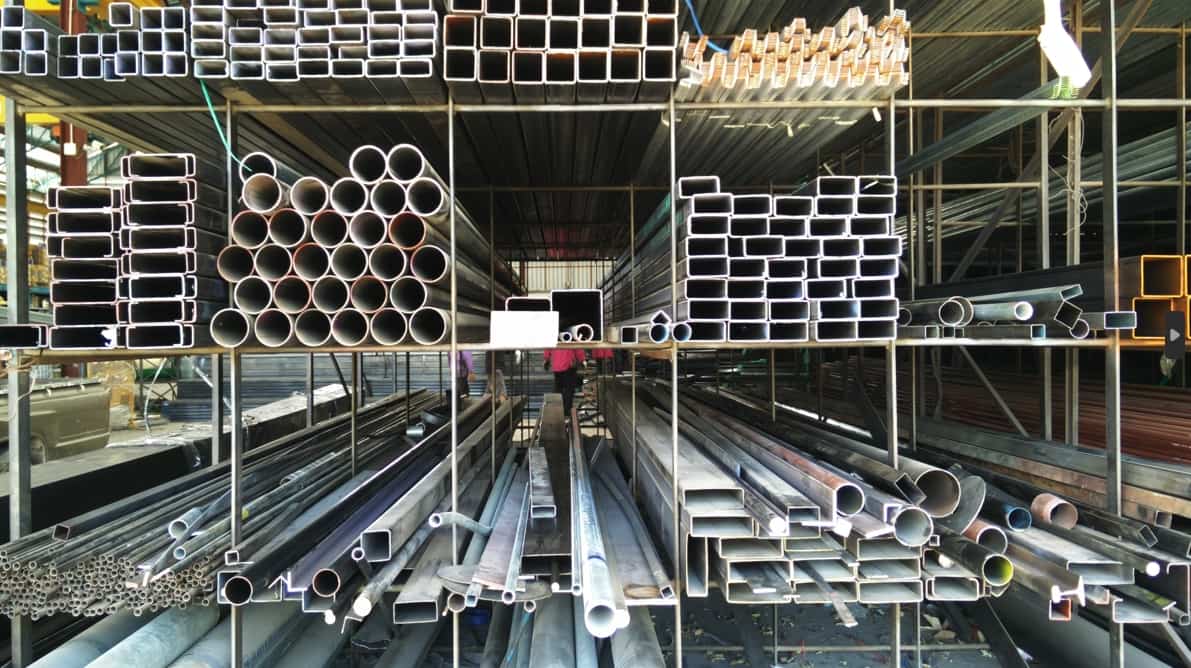Selecting the right steel for your kitchen knives is a critical decision that affects their performance, durability, and maintenance. The best steel for kitchen knives largely depends on your specific needs and preferences.
High-carbon stainless steel is often regarded as a top-tier choice. Mainly for its superior hardness and edge retention, which contribute to a knife that is both sharp and long-lasting.
It’s important to consider the balance between hardness and toughness when choosing kitchen knife steel. Steel that is too hard may hold an excellent edge but can be brittle and prone to chipping. Conversely, steel that is too soft may be very tough but will require frequent sharpening. Additionally, elements such as chromium, molybdenum, and vanadium often added to steel can enhance various properties including resistance to corrosion and overall strength.
Table of contents
Main elements of steel

The steel used to make a blade isn’t a natural material. People have been making it on purpose for generations for various uses. Steel is a mix of different chemicals. The important elements that affect its performance, like chromium and carbon, are often discussed. Other elements, like manganese, nickel, and silicon, play smaller roles.
- Carbon: Carbon is found in all knife steels. It boosts tensile strength, edge retention, and increases hardness. However, it can decrease toughness and raise concerns to rust. Typically, containing more than 0.50% carbon makes the steel “high-carbon”.
- Chromium: added to enhance wear resistance and corrosion resistance. It forms large, complex carbides. A steel with at least 13% chromium is usually called “stainless” . Despite the name, all steel can rust without proper maintenance. High amounts of Chromium can reduce toughness.
- Manganese: improves grain structure and contributing to hardenability, strength, and wear resistance. It enhances steel during manufacturing. Present in most cutlery steels, larger quantities increase hardness and brittleness.
- Nickel: adds toughness. Though believed to contribute to corrosion resistance. Nickel is also added to create softer portions in damascus steels.
- Silicon: contributes to strength.
- Vanadium: contributes to wear resistance, hardenability and enhances wear resistance. Vanadium refines the grain, improving toughness and allowing the blade to take a sharp edge. Various steels contain Vanadium, with CPM 10V, S90V, S125V featuring high amounts.
- Phosphorus: found in small amounts in most steels, is a contaminant reducing toughness. But in very small amounts, it improves strength, machinability, and hardness.
- Sulfur: increases machinability but decreases toughness.
The most common steel types in kitchen knives
You have probably noticed from the above list that “steel” is not such a simple term. If you are searching for a kitchen knife made from steel, you should be aware of the main types on sale. We will now take a closer look at the pros and cons of each steel variety.

Carbon steel
Knives made of carbon steel are preferred for their ability to maintain a very sharp edge. This type of steel typically requires more care due to its susceptibility to rust.
Properties
Adding carbon into steel affects the material by altering the lattice structure of the metal. More carbon causes more structural changes, the main benefit of which is increased hardness. Hard materials have high scores on the Rockwell scale, which means they resist scratching well. Knives made of carbon steel are also very strong so that they do not deform under large forces.
The downside of having a hard carbon steel blade is that it is quite brittle, and therefore, not very tough. A brittle knife is at risk of cracking or chipping from a sudden impact, i.e. hitting the ground. There is a trade-off between hardness and toughness. Increasing the carbon content of steel achieves a hard, scratch-resistant blade, but this sacrifices some toughness.
Handpicked high carbon knives for you
Get 11% off and free shipping – limited time only!
Manufacture
Carbon steel knives are mostly hand-forged. Which can raise the price of some models. Expert blacksmiths manufacture high-end Japanese kitchen knives by hand. Decades of knowledge and practice go into producing each knife.
Crafting knives by hand also has the advantage of differential heat treatment. This process allows different parts of the blade to have different heat treatments and therefore take on varying levels of hardness. You can have a hard cutting edge with a softer core. Such a design is a good compromise because the blade can better absorb energy while maintaining a wear-resistant surface.
Stainless steel
Stainless steel is highly resistant to rust and corrosion, making it a practical choice for your kitchen. The most common stainless steel for kitchen knives include 420HC, 440C, X50CrMoV15, etc.
Properties
Stainless steel has a shiny, silvery appearance due to large amounts of chromium. The chromium oxide on the knife’s surface acts as a barrier to prevent moisture and air from penetrating the blade and causing surface or internal rust. This property is important for a knife since it is frequently in contact with water and salty or acidic foods that could corrode the blade.
Stainless steel is softer and weaker in comparison to carbon steel. On the other hand, stainless steel knives are less brittle.
Manufacture
This is rarely forged by hand. A lot of Western stainless steel knives are produced in large quantities in factories. The knife shapes are cut out of stainless steel sheets and then sharpened and fitted with handles. Each knife does not get nearly as much attention as a handmade high-carbon steel knife, hence they tend to be more affordable.
Powdered steel
Powdered steel contains a range of metals just like any other type of steel. It does not have any special components compared to other forms of steel. What makes this type of steel special are its manufacturing process and microscopic structure.

Properties
Compared to standard casting methods, the production of powdered steel yields a more uniform material with smaller grains and a very strong structure. With all the metal grains firmly bonded, this material achieves a good combination of both hardness and toughness. The edge of a powdered steel knife is easy to sharpen and stays sharp for a long time.
Manufacture
The technique of manufacturing powdered steel is at the forefront of metal technology. Instead of happening on an assembly line or in a blacksmith’s shop, this process currently takes place in laboratory environments. As such, the price of powdered steel knives is substantial.
Making powdered steel starts with atomizing molten steel with a liquid or gas spray. The liquid steel drips out of a large container and is immediately sprayed by a fluid. This solidifies the steel into tiny droplets. The solid droplets all collect at the bottom of a chamber and are ready for the next stage.
The tiny steel particles are then mixed and sintered (below their melting point) at high pressure to close any gaps. This forms a single ingot (a block of steel) in the shape of a knife.
Damascus steel
Damascus is of course the capital of modern-day Syria. The name originates from metal tools that used to be made in the city during the 4th century. Those tools were produced with a type of steel known as wootz that was imported from India.
Although damascus steel still exists, the moderen day damascus is not entirely the same. What we call damascus steel today is mostly pattern-welded. A type of forging technique requires multiple types of steel to be forged together.
Manufacture
Today, Damascus-style steel is made by hammering together many layers of steel and iron (sometimes over 50) at high temperatures in low oxygen. This is called forge welding.
Steel properties
Now we know what kinds of steel are used in kitchen knives, the next step is to understand what specifically makes a steel knife perform well. No knife can achieve perfection in every category, so a chef will have to make some compromises.
Strength
This is a knife’s ability to resist permanent deformation due to applied forces. In the case of knives, you want the blade to be strong enough to avoid bending or twisting while you cut with it.
You need to know the strength of the blade steel. If a knife is made from ductile steel, pushing it too hard could bend it significantly. This damage will need specialist repairs. Some knives are made from more brittle steel. Brittle knives can be strong, but once you exceed a certain force, the blade will snap completely rather than bend.
Toughness
Generally speaking, a tough material can absorb large amounts of energy without significant structural damage. That could mean a crack or dent in the blade. For a chef, this is relevant in case they drop the knife.
A tough knife will perform well as it frequently hits the cutting board while you chop. If a knife is swiftly cutting through meat and it strikes a hard bone, it could crack if it lacks toughness.
Hardness
Hard materials are difficult to scratch or engrave, so they score highly on the Rockwell scale. A hard knife blade will keep its finish for longer because most foods are too soft to scratch the surface. Hard blades are also some of the strongest. Yet, they are the most brittle too. Prioritizing hardness means that toughness is lost.
Softer knives can be scratched, though they can better absorb impacts. The most common method to harden steel is by adding carbon to the alloy. Carbon percentage in steel is proportional to the hardness and, unfortunately, the brittleness.
Rust resistance
All metal and steel knives are at risk of corrosion. This is a process every knife owner should try to avoid. The formation of rust not only spoils the beautiful silver finish of a steel knife but can also blunt the blade’s edge. Rust can potentially contaminate the food you prepare.
As we know, chromium is a substance that can give knives more stain resistance. Including this material in steel comes with a cost of decreased strength.
Blade geometry
A sharp knife is a useful knife. Some steel knives can be manufactured with particularly sharp edges. Companies can machine fine-grain steels (like powdered steel) more thinly than standard forms of steel.
You ideally want your steel knife to have a sharp edge that will stay sharp. Hard materials will naturally hold an edge for the longest, yet it takes more effort to sharpen them once they become blunt. This is another dilemma for knife owners.
The blade bevel and shape are other important factors, though they do not depend on the type of steel in a knife.
Common steels for kitchen knives

Stainless
The 400 series is a very common grade of stainless steel for kitchen knives. These kinds of steel have a higher proportion of chromium, but not so much as to weaken the blade.
- 440 steel is available in a few varieties (440A, 440B, and 440C). All have a higher amount of carbon than the 420, but 440C is the most desirable alloy. Despite its higher carbon content, it is still a type of stainless steel and so is not very brittle.
- X50CrMoV15 is a widely utilized stainless steel popular in many mid-range kitchen knives. Also known as 1.4116 steel. It falls within a moderate price range and boasts a balanced carbon and chromium content. The steel offers good overall performance and is easy to maintain. However, its edge retention is somewhat inferior when compared to higher-end steels.
- AUS 8 Steel is a decently tough Japanese stainless steel available at an affordable price. It incorporates vanadium for enhanced hardness. The steel provides good corrosion resistance and is easy to sharpen. However, its edge retention is moderate, and it is less durable than high-end steels.
High carbon
Moving away from stainless steel knives, the 10 series includes 1060, 1084, and 1095 (based on SAE), and is a good choice of carbon steel for cutlery. Steels from this series are not too expensive, yet are tough and hard, plus they take on a sharp edge
- 1095 steel is a high carbon steel widely favored in traditional knives. Falling within an affordable to moderate price range, it stands out for its high carbon content. The steel is easy to sharpen and holds an edge well. However, it is prone to rust if not cared for properly.
- VG 10 steel is a high-end Japanese steel renowned for its excellent edge retention and sharpness. Falling within a moderate to expensive price range, it distinguishes itself by containing vanadium, enhancing toughness. The steel is resistant to rust and is known for its durability. However, it can be challenging to sharpen.
- D2 steel is a tool steel characterized by high hardness and good wear resistance. Positioned within a moderate price range, it features high carbon and chromium content. Notably, it excels in edge retention. However, it is not as resistant to corrosion and may pose challenges when it comes to sharpening.
Heat Treatment Processes
The heat treatment of steel plays a pivotal role in determining the final characteristics and performance of your kitchen knives.
Heat treating techniques
Before diving into specific techniques, know that heat treating involves heating and cooling the steel in a controlled manner. The goal is to alter the steel’s internal structure to achieve the desired hardness, toughness, and wear resistance.
- Annealing: This process softens the steel, making it easier to shape and work with. Your knife’s steel is heated to a specific temperature and then allowed to cool slowly.
- Quenching: After being heated to a high temperature, the steel is rapidly cooled, typically in oil or water. This step increases the hardness of the steel.
- Tempering: Post-quenching, the steel can be extremely hard but also brittle. Tempering is done by reheating the steel to a lower temperature to reduce brittleness and improve toughness.
The heat treating process significantly impacts the hardness and toughness of your knife. Hardness determines the knife’s ability to maintain an edge, while toughness reflects how well the knife can resist chips and cracks.
Optimal heat treatment varies based on the specific type of steel and the intended use of the knife. Your choice should reflect a balance between sharpness, maintenance, and overall knife longevity.
No kitchen knife steel is “the best”
The previous list only showed a handful of the steel alloys used for knife manufacture. You could spend time comparing the apparent strengths of each steel, but you will never find the best. Depending on whether you are a blacksmith, an amateur cook, an advanced chef, or an explorer, your personal preferences will vary.
If you hope to find a long-lasting, and sharp chef knife, your best option may be a high-carbon steel knife. You should be sure to visit our store since we offer expertly forged high-carbon knives at fantastic prices.












